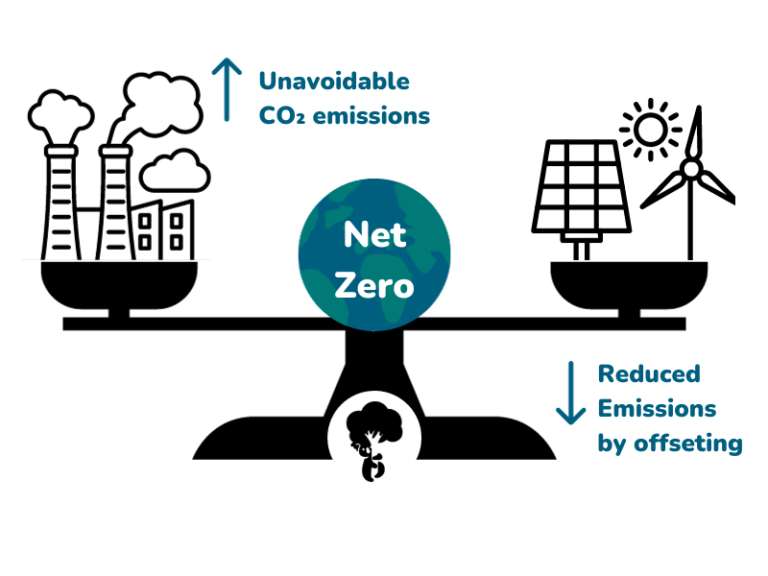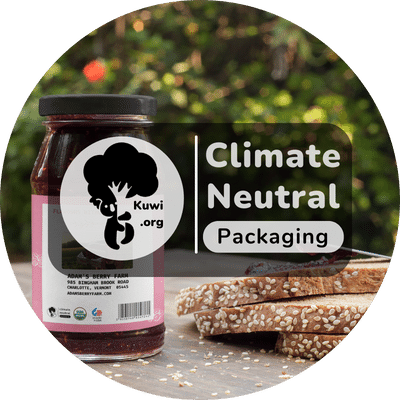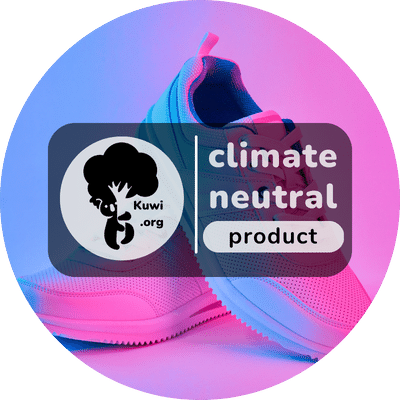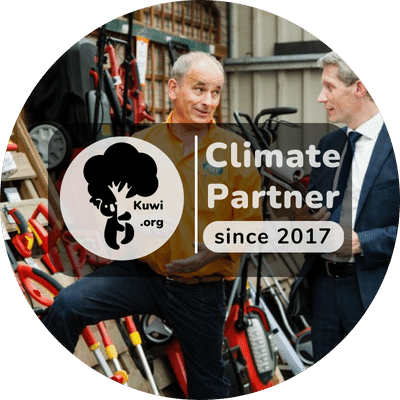Climate-Neutral Production Certificate
As concerns about climate change continue to escalate, the need for sustainable practices within industries has become absolutely essential.
Companies are increasingly recognizing their responsibility to reduce their ecological footprint and contribute to a more sustainable future.
Kuwi.org’s recognition of these efforts is the ‘Climate-Neutral Production Certificate.’ In this article, we will delve into the criteria that companies must meet to qualify for this certification.
Certificate Limitations
At Kuwi.org, we believe in providing companies with a practical path to achieving climate neutrality. We understand the importance of a gradual approach, which is why we offer partial certificates to enable companies to transition to net-zero emissions sustainably by 2050.
This article specifically focuses on the ‘Climate-Neutral Production Certificate,’ which solely pertains to a company’s own production-related emissions. This means that emissions originating from other parts of the value chain, including the production of semi-finished goods or raw materials, are typically not within the scope of the ‘Climate-Neutral Production’ certificate.
While these upstream emissions significantly contribute to a company’s carbon footprint, addressing and mitigating them often requires collaboration with suppliers and stakeholders outside the direct control of the company seeking certification.
However, responsible companies committed to achieving climate neutrality in their production processes must actively collaborate with suppliers, promote sustainable sourcing, and encourage the adoption of environmentally friendly production methods throughout the entire value chain.
By influencing the sustainability practices of their suppliers and partners, companies can indirectly address these upstream emissions and contribute to a more comprehensive approach to reducing their overall environmental impact.

What falls within the scope of this certificate
To obtain the ‘Climate-Neutral Production Certificate,’ the company and Kuwi.org make a precise estimation of the company’s own emissions related to production. This involves a combination of market average data and company-specific input.
Market average data provide a benchmark for emissions associated with specific industrial activities and processes, aiding in establishing a baseline against which a company can compare its own performance. By utilizing sector-wide emission factors and benchmarks, companies can assess their emissions in relation to the sector average and identify areas for improvement.
However, recognizing that each company has unique production processes and characteristics, the certificate also takes into account company-specific input. This involves collecting data directly from the company’s operations, such as energy consumption, fuel usage, and material input. By merging market average data with company-specific input, a more accurate estimation of the company’s emissions is achieved, considering the specific operational context.
This approach acknowledges that different companies within the same industry may have varying levels of efficiency and sustainability practices. It encourages companies to take responsibility for their emissions and strive for continuous improvement, even if they outperform the sector average. By considering both market averages and company input, the ‘Climate-Neutral Production Certificate’ provides a comprehensive evaluation of a company’s environmental impact and promotes a culture of transparency and responsibility in addressing production-related emissions.
Data Collection Disclaimer
To date, there exists a significant imbalance between market average data and company-specific data, primarily due to two reasons. Firstly, obtaining primary data for individual companies is a costly and labor-intensive process. Achieving the utmost accuracy requires on-site verification and strict policy enforcement. However, the associated costs of such operations make climate action financially infeasible for most companies.
The second reason is that companies working with Kuwi.org are not legally obligated to offset their unavoidable emissions. Mandatory CO2 offsetting is only imposed on a handful of large enterprises in the EU (read more here). As a result, all other companies engage in offsetting their emissions through the voluntary CO2 offset market (learn more here).

Achieving Climate Neutrality in Production: The Path to Certification
Assessment of the Carbon Footprint
A company must begin by conducting an assessment of its carbon footprint. This assessment should encompass the entire production cycle, from raw material extraction to product disposal or recycling. It must include direct emissions (scope 1), indirect emissions from purchased energy (scope 2), and other indirect emissions along the value chain (scope 3). Accurate data collection and measurement are necessary to establish a baseline and identify areas for improvement.
As mentioned earlier, this specific certificate solely takes into account a company’s emissions related to its own production activities. Therefore, the scope of this certificate is limited to scope 1 emissions and, to some extent, scope 2. By providing companies the opportunity to achieve this partial certificate, they can subsequently incorporate additional layers into their sustainability efforts. This paves the way for an achievable path to reaching net-zero status.

Emission Reduction Strategies
Once the carbon footprint is determined, the company must demonstrate its commitment to reducing emissions. This includes developing and implementing robust emission reduction strategies.
Companies should focus on reducing both direct and indirect emissions. Direct emissions can be addressed through energy efficiency measures, process optimization, and transitioning to cleaner energy sources. Indirect emissions can be reduced by optimizing transportation logistics, implementing circular economy practices, and promoting sustainable supply chains.
Renewable Energy Transition
Transitioning to renewable energy sources is a critical component of achieving climate neutrality in production. Companies should strive to shift from fossil fuel-based energy to renewable sources such as solar, wind, or hydropower.
Investing in on-site renewable energy generation or sourcing renewable energy through power purchase agreements can help make the production process low in emissions. Furthermore, energy efficiency measures should be taken to maximize the effectiveness of renewable energy systems.

CO₂ Offset
Despite significant efforts to reduce emissions, achieving absolute carbon neutrality in production is often impossible for most industries.
In such cases, Kuwi.org offers companies the opportunity to offset their remaining emissions by supporting verified CO₂ offset projects. These projects must adhere to strict standards, ensuring real and additional emission reductions in other sectors.
Examples of eligible offset projects include reforestation initiatives, renewable energy installations in underserved communities, or methane emissions capture and storage from landfills.

Transparent Reporting and Verification.
To qualify for the ‘Climate-Neutral Production Certificate,’ companies must commit to transparently reporting their CO₂ emissions, reduction efforts, and offset activities.
Accurate and reliable reporting is essential for stakeholders to gain insights into the company’s environmental impact and progress. Independent verification of the reported data by a recognized third party adds credibility and ensures compliance with certification requirements.
Continuous Improvement and Innovation
The journey to climate neutrality is an ongoing process. To maintain certification, companies must demonstrate a commitment to continuous improvement and innovation.
This includes setting ambitious emission reduction goals, regularly reviewing and updating strategies, and embracing emerging technologies and best practices. Collaboration with industry peers, research institutions, and environmental organizations can promote knowledge sharing and foster collective action.










